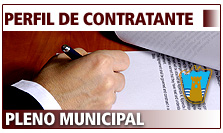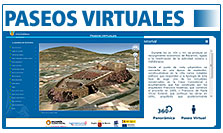GOOD PRACTICES IN THE WORKPLACE, MEASURES FOR THE PREVENTION OF COVID-19 INFECTIONS
Measures to avoid infections by COVID-19
GOVERNMENT OF SPAIN - MINISTRY OF SANITATION
GOOD PRACTICES IN THE WORKPLACE, MEASURES FOR THE PREVENTION OF COVID-19 INFECTIONS
UPDATE APRIL 11
Before going to work
1. If you have any symptoms (cough, fever, shortness of breath, etc.) that could be associated with COVID-19, you should not go to work and you must contact the COVID-19 service telephone number in your Regional authority or with your primary care centre and follow their instructions. You should not go to your job until they confirm that there is no risk for you or for others. See the guide (in Spanish) of how to act in case of symptoms here: https://www.mscbs.gob.es/profesionales/saludPublica/ccayes/alertasActual/nCov-China/documentos/20200325_Decalogo_como_actuar_COVID19.pdf
2. If you have been in close contact (cohabitants, relatives and people who have been in the same place as a positive case while the case presented symptoms at a distance of less than 2 meters for a time of at least 15 minutes) or have shared space without keeping the interpersonal distance with a person affected by the COVID-19, you should not go to your workplace, even in the absence of symptoms, for a space of at least 14 days. During this period, you should monitor for signs of the disease.
3. If you are vulnerable due to age, being pregnant or having previous medical conditions (such as high blood pressure, cardiovascular disease, diabetes, chronic lung diseases, cancer or immunosuppression), you will not have to go to the workplace. In the event that you are unable to perform your tasks remotely, you should contact your doctor to prove, where appropriate, that you must indeed remain in a situation of isolation for work purposes and, if so, it will be considered a situation assimilated to a workplace accident for temporary economic benefit.
Commuting to work
1. Whenever you can, prioritize the mobility options that best guarantee the interpersonal distance of approximately 2 meters. For this reason, individual transportation is preferable in this situation.
2. If you go to work on foot, by bike or motorcycle, you do not need to wear a mask. Keep the interpersonal distance when you walk down the street.
3. If you have to travel in a car, take extreme care of the vehicle's cleanliness and prevent more than one person from traveling for each row of seats, maintaining the greatest possible distance between the occupants.
4. If you take a taxi or a people carrier, only one person should travel for each row of seats, maintaining the greatest possible distance between the occupants.
5. On bus trips, public transport or company bus, metro or train, keep the interpersonal distance with your travel companions. In the case of public buses, the driver will ensure that the interpersonal distance is respected. It is recommended to use a hygienic mask, not a medical one, if you go on public transport.
In the workplace
Check here (in Spanish) the Procedure for occupational risk prevention services against exposure to SARS-CoV-2 (COVID19) of the Ministry of Health: https://www.mscbs.gob.es/profesionales/saludPublica/ccayes/alertasActual/nCov-China/documentos/PrevencionRRLL_COVID-19.pdf
1. Work tasks and processes must be planned so that workers can maintain the interpersonal distance of approximately 2 meters, both at the entrance and exit to the workplace and during their stay there.
2. It must be ensured that the interpersonal distance is guaranteed in the common areas and, in any case, crowds of personnel at these points must be avoided.
3. The resumption of the activity must be guided by the principle of minimisation of risk. Therefore, the reincorporation to normality of those activities that carry a risk of crowding should take place last. In any case, you should avoid carrying out activities that involve crowds of people.
4. The arrival at work should be organized in a staggered way to avoid crowds on public transport and at the entrance to workplaces.
5. In those companies or establishments open to the public, measures must be implemented to minimize contact between workers and clients or the public.
6. In establishments open to the public, the following considerations will be taken into account:
• The maximum capacity must allow compliance with the interpersonal distance requirement.
• When possible, access control mechanisms will be enabled at the entrances.
• All the public, including the waiting one, must keep the interpersonal distance.
• The company must provide personal protective equipment when the risks cannot be avoided or cannot be sufficiently limited by technical means of collective protection or by measures or procedures for organizing work.
• Personal protective equipment will be appropriate to the activities and work to be carried out.
7. The company must stagger the hours as much as possible if the work space does not allow maintaining the interpersonal distance in ordinary shifts, considering possibilities of redistribution of tasks and/or teleworking.
8. It is recommended to facilitate teleworking and meetings by phone or videoconference, especially if the workplace does not have spaces where workers can respect interpersonal distance.
9. It is recommended to avoid work trips that are not essential and that can be solved by means of a call or videoconference.
10. It is not essential to wear a mask during your workday if the type of work does not require it and if you maintain interpersonal distance.
Organizational measures
1. In accordance with the regulations on occupational risks, it will be necessary to inform the staff in a reliable, updated and habitual way of the health recommendations that they must follow individually.
2. It is necessary to provide the personnel with the necessary hygiene products to be able to follow the individual recommendations, adapting to each specific activity. In general, it is necessary to maintain an adequate supply of soap, hydro-alcoholic solution and disposable tissues.
3. A sufficient supply of cleaning materials must be maintained to be able to undertake reinforced sanitation tasks on a daily basis. Among them, bleach and products authorized by the Ministry of Health to disinfect, see them (in Spanish) here: https://www.mscbs.gob.es/profesionales/saludPublica/ccayes/alertasActual/nCov-China/documentos/Listado_virucidas.pdf).
4. It is necessary to have a sufficient supply of protection material, especially gloves and masks, for personnel when indicated by the occupational risk prevention service and, specifically, the most exposed (company doctors and nurses, cleaning personnel, staff facing the public).
5. Specific measures must be adopted to minimize the risk of transmission to especially sensitive workers when they have had to go to the workplace.
6. It is advisable to carry out a contingency plan, identifying the risk of exposure to the virus from the different activities carried out in the workplace, adopting protective measures in each case in accordance with the applicable regulations at all times. For the elaboration of this plan, the prevention delegates or the workers' representatives must be consulted.
7. It is necessary to establish protocols in the event that a worker manifests symptoms at their job, to protect him and to protect the rest of the workforce (follow recommendations Procedure for occupational risk prevention services against exposure to SARSCoV-2 (COVID19) of the Ministry of Health (see above link “In the workplace”).
Recommendations to workers
1. Comply with all the prevention measures that your employer indicates.
2. Maintain the interpersonal distance (approximately 2 metres).
3. Avoid greeting with physical contact, including shaking hands.
4. Avoid, as far as possible, using other workers' equipment and devices. If necessary, increase the precautionary measures and, if you can, disinfect them before using it. If this is not possible, wash your hands immediately after using them. In this link you have recommendations (in Spanish) on how to do it: https://www.mscbs.gob.es/profesionales/saludPublica/ccayes/alertasActual/nCov-China/img/COVID19_higiene_manos_poblacion_adulta.jpg
5. Wash your hands frequently with soap and water, or with a hydro-alcoholic solution. It is especially important to wash after coughing or sneezing or after touching potentially contaminated surfaces. Try to make each wash last at least 40 seconds.
6. Cover your nose and mouth with a disposable tissue when you cough and sneeze, and then dispose of it in a closed trash can. If you do not have scarves, use the inside of the elbow to avoid contaminating your hands.
7. Avoid touching your eyes, nose or mouth.
8. Make cleaning staff’s work easier when you leave your post, clearing as much as possible.
9. Throw away any personal hygiene waste - especially disposable tissues - immediately into the wastebaskets or authorized containers.
10. If you start to notice symptoms, warn your colleagues and superiors, take extreme precautions for both social distancing and hygiene while you are at work and immediately contact your company's occupational risk prevention service, your doctor. of primary care or with the hotline for COVID-19 in your Regional Authority.
Hygiene measures in the workplace
1. Periodic ventilation tasks must be carried out in the facilities and, at least, daily and for five minutes.
2. It is recommended to reinforce the cleanliness of the air filters and increase the ventilation level of the air conditioning systems to renew the air more regularly.
3. It is advisable to reinforce cleaning tasks in all rooms, with special emphasis on surfaces, especially those that are most frequently touched such as windows or door knobs, as well as all the devices commonly used by employees, from machinery to tables and computers.
4. It is necessary to clean the work area used by an employee at each shift change.
5. The usual detergents are sufficient, although you can also consider incorporating bleach or other disinfectant products into cleaning routines, always in safe conditions.
6. In any case, proper protection of the cleaning staff must be ensured. All tasks must be carried out with a mask and single-use gloves.
7. Once cleaning is finished, and after removing gloves and mask, cleaning personnel must carry out a complete hand hygiene, with soap and water, for at least 40-60 seconds.
8. In the case of work uniforms or similar, they will be bagged and sealed, and they will be transferred to the point where their usual washing is done, recommending a full cycle wash at a temperature between 60 and 90 degrees.
Waste management in the workplace
1. Ordinary waste management will continue to be carried out in the usual way, respecting waste separation protocols.
2. It is recommended that disposable handkerchiefs used by personnel for drying hands or with “etiqueta respiratoria” compliance are discarded in trash cans or containers protected with a lid and, if possible, pedal operated.
3. All personal hygiene material (masks, latex gloves, etc.) must be deposited in the appropriate division (grouping of household waste that is obtained after separate collections have been made).
4. In the event that a worker shows symptoms while at his workplace, the container where he has deposited handkerchiefs or other used products must be isolated. This garbage bag should be removed and placed in a second garbage bag, with closure, for deposit in the rest fraction.
After going to work
1. Workers must take care of distances and measures to prevent infection and hygiene at home, especially if they live with people from risk groups.
The Ministry of Health recommends strictly complying with the provisions of this guide, which contains a reminder of the main obligations provided in current regulations, along with suggestions that are equally important to prevent infections and thus fight against COVID-19.









